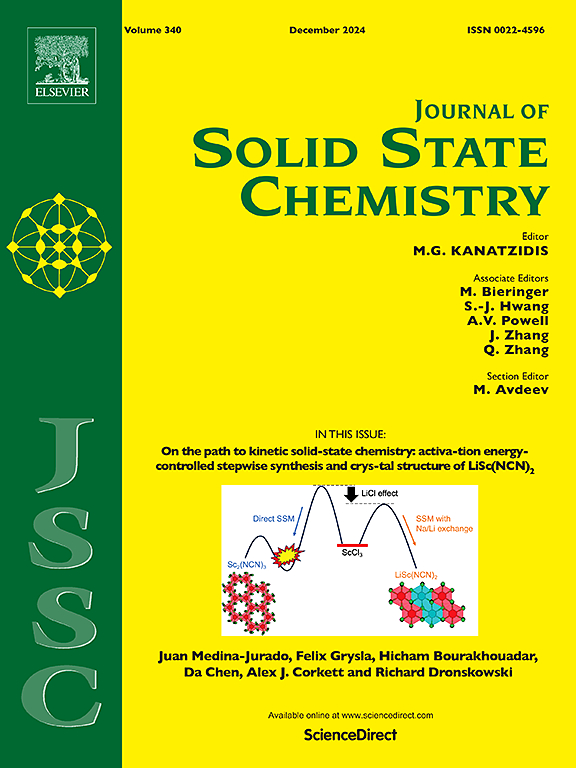The construction of metal-organic frameworks based on 2-(1-hydroxy-ethyl)-3H-benzoimidazole-5-carboxylic acid
IF 3.2
3区 化学
Q2 CHEMISTRY, INORGANIC & NUCLEAR
引用次数: 0
Abstract
Presented here are two novel metal-organic frameworks (MOFs) synthesized by employing a trifunctional imidazolate derivative, 2-(1-hydroxy-ethyl)-3H-benzoimidazole-5-carboxylic acid (H2ebimc) as a ligand. In compound 1, the Zn atoms and ebimc2− ligands were crosslinked to build a wavelike two-dimensional (2D) layer with 3-connected (4.82) topology, with water molecules as terminal ligands coordinated on both sides of the layers. Then, the D-(+)-camphoric acid (H2cam) ligand was introduced into the synthesis system to obtain compound 2. In compound 2, similar topological layers were formed based on Zn2(CO2)3 subunits (SBUs) and then were further pillared by cam2− ligands to construct the final three-dimensional (3D) pillar-layered framework. Moreover, compound 2 exhibited high selectivity of CO2 over N2 and CH4, along with a distinctive framework flexibility triggered by C2H6. Our results highlight the great potential of H2ebimc as a multifunctional ligand for synthesizing MOFs.

基于2-(1-羟基乙基)- 3h -苯并咪唑-5-羧酸的金属有机骨架的构建
本文介绍了以三官能团咪唑衍生物2-(1-羟基乙基)- 3h -苯并咪唑-5-羧酸(H2ebimc)为配体合成的两种新型金属有机骨架(mof)。在化合物1中,锌原子和ebimc2−配体交联,构建了具有3连通(4.82)拓扑结构的波状二维(2D)层,水分子作为末端配体在层的两侧协调。然后,将D-(+)-樟脑酸(H2cam)配体引入合成体系,得到化合物2。在化合物2中,基于Zn2(CO2)3亚基(SBUs)形成类似的拓扑层,然后用cam2 -配体进一步支撑,构建最终的三维(3D)柱状层状框架。此外,化合物2对N2和CH4具有较高的选择性,并具有由C2H6触发的独特的框架柔韧性。我们的研究结果突出了氢铋作为一种多功能配体用于合成mof的巨大潜力。
本文章由计算机程序翻译,如有差异,请以英文原文为准。
求助全文
约1分钟内获得全文
求助全文
来源期刊

Journal of Solid State Chemistry
化学-无机化学与核化学
CiteScore
6.00
自引率
9.10%
发文量
848
审稿时长
25 days
期刊介绍:
Covering major developments in the field of solid state chemistry and related areas such as ceramics and amorphous materials, the Journal of Solid State Chemistry features studies of chemical, structural, thermodynamic, electronic, magnetic, and optical properties and processes in solids.
 求助内容:
求助内容: 应助结果提醒方式:
应助结果提醒方式:


